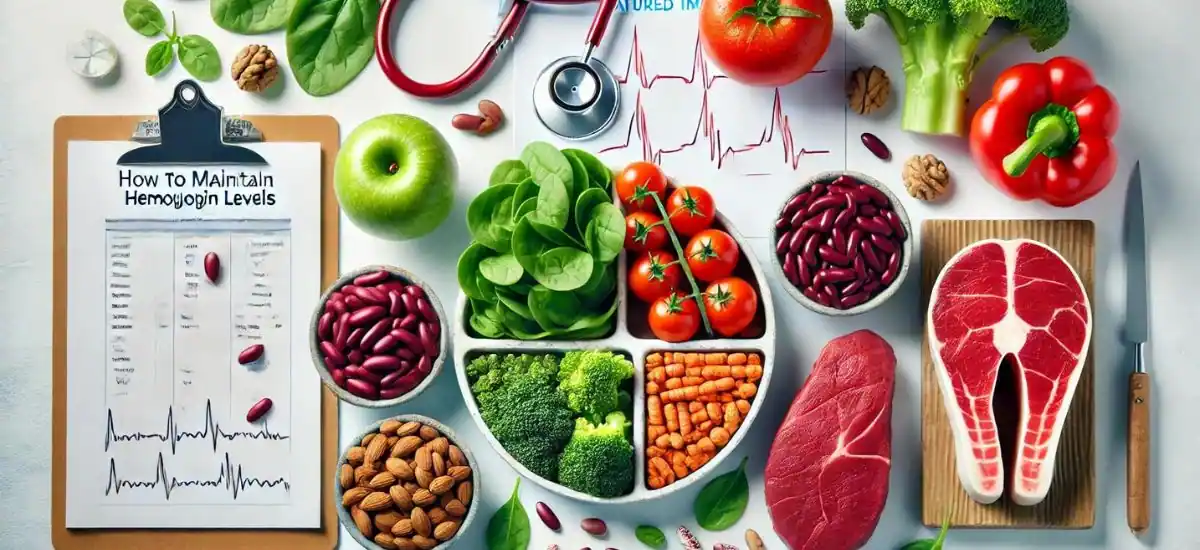Hemoglobin, the oxygen-carrying component of red blood cells, plays a vital role in maintaining overall health. How hemoglobin levels affect your health is fundamental to understanding various medical conditions. Low hemoglobin levels, often indicative of anemia, can lead to symptoms like fatigue, weakness, and pale skin, impacting daily energy and cognitive function.
On the other hand, high hemoglobin levels can increase the risk of serious health issues, including blood clots and heart disease, due to increased blood viscosity. Maintaining optimal hemoglobin levels is crucial for ensuring effective oxygen delivery throughout the body, supporting muscular and neurological functions, and promoting general vitality. Monitoring and managing these levels through diet, lifestyle adjustments, and medical interventions when necessary is key to preventing the potential adverse effects on health.
Understanding Hemoglobin Levels
- What is Hemoglobin? Hemoglobin (Hb) is a protein in your red blood cells that carries oxygen. It’s what gives blood its red color.
- Normal Hemoglobin Levels: The typical range varies:
- Men: 13.8 to 17.2 grams per deciliter
- Women: 12.1 to 15.1 grams per deciliter
- Children: Levels vary with age, so it’s best to consult pediatric norms.
Knowing these numbers can help you gauge whether you’re on the right track or if it’s time to chat with your doctor.
Low Hemoglobin Levels (Anemia)
- What Causes It? Low hemoglobin levels often stem from iron deficiency, but other culprits include vitamin deficiencies, chronic diseases, or genetic conditions.
- Symptoms to Watch For:
- Feeling like you’re running on empty? Fatigue is a common sign.
- If you look pale or feel weaker than usual, these can also be red flags.
- Health Impacts: Anemia can make you feel sluggish and affect everything from your concentration to how well you recover from illnesses.
High Hemoglobin Levels
High hemoglobin levels can be as tricky as low levels. Here’s the scoop on why they might rise:
- Common Causes:
- Dehydration: Less water in the blood can falsely elevate hemoglobin levels.
- Living at high altitudes: The body produces more hemoglobin in response to lower oxygen availability.
- Smoking and certain medical conditions, like polycythemia vera, also spike hemoglobin levels.
- Symptoms to Look Out For:
- Headaches and dizziness aren’t just annoying—they could be signs of high hemoglobin.
- Itching and redness can also indicate higher than normal levels.
- Potential Health Risks:
- High hemoglobin levels increase the risk of blood clots and heart issues, which can be serious.
How to Maintain Healthy Hemoglobin Levels

Balancing hemoglobin levels doesn’t need to be a high-wire act. Here’s how you can stay level:
- Diet Tips:
- Iron-rich foods are your best friends. Think spinach, red meat, and beans.
- Don’t forget Vitamin C; it boosts iron absorption.
- Lifestyle Tweaks:
- Regular exercise helps stimulate hemoglobin production.
- Staying hydrated and quitting smoking are must-do’s for healthy blood.
- When to Consider Medical Advice:
- If dietary changes don’t help, iron supplements or even therapies might be the next step.
Diagnosing Hemoglobin Level Irregularities
Knowing if your hemoglobin levels are off can sometimes be tricky, but here’s how doctors figure it out:
- Common Tests:
- A complete blood count (CBC) is the first step to checking hemoglobin levels.
- More specialized tests might follow if your CBC throws up any red flags.
- Reading the Results:
- Results lower or higher than normal ranges suggest it’s time for a deeper dive into what’s happening with your health.
Frequently Asked Questions
Q1. What is the normal hemoglobin level?
Ans: For men, it’s typically between 13.8 to 17.2 grams per deciliter, and for women, it’s between 12.1 to 15.1 grams per deciliter.
Q2. What can cause low hemoglobin levels?
Ans: Iron deficiency is a common cause, but other factors like vitamin deficiencies or chronic diseases play a role.
Q3. How can I naturally increase my hemoglobin?
Ans: Focus on iron-rich foods and ensure you’re getting enough Vitamin C to help with absorption.
Q4. When should I see a doctor about my hemoglobin levels?
Ans: If you experience symptoms of low or high hemoglobin, or if your levels are consistently outside the normal range, it’s time for a consultation.
Conclusion
Keeping your hemoglobin levels in check is key to a vibrant, healthy life. Whether it’s tweaking your diet or following up with your doctor, taking charge of your hemoglobin can make a big difference.


